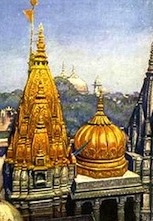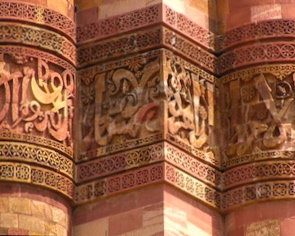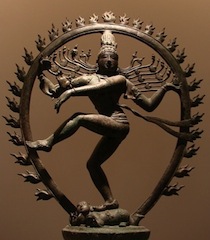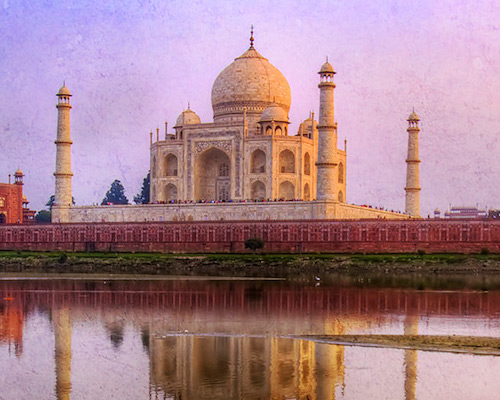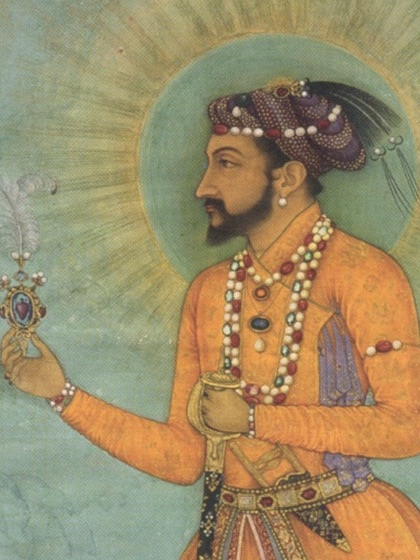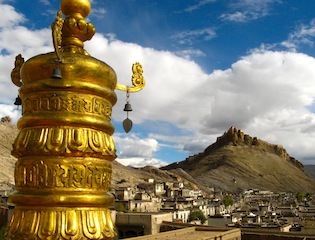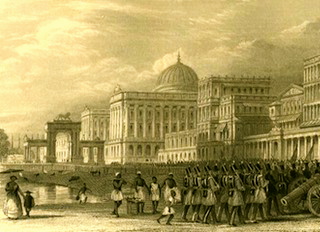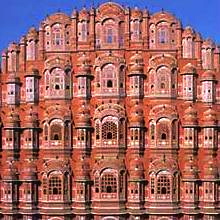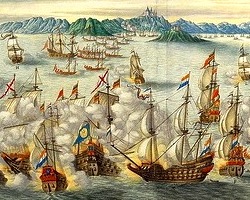O Sadhu! my land is a sorrowless land.
I cry aloud to all, to the king and the beggar, the emperor and the fakir,
Whosoever seeks for shelter in the Highest, let all come and settle in my land!
Let the weary come and lay his burdens here!
|
|
—Kabir (1440-1518), translated by Rabindranath Tagore
|
In the great books of India, an empire spoke to us, nothing small or unworthy, but
large, serene, consistent; the voice of an old intelligence, which in another age
and climate had pondered and thus disposed of the questions that exercise us.
|
|
—Ralph Waldo Emerson |
ANCIENT INDIA was an Indic civilization, but medieval
and early modern India became Indo-Islamic. In this course we will assess the development of this
Indo-Islamic legacy as we trace the shaping and reshaping of the Indian subcontinent from the
classical civilizations of late antiquity to the rise of British colonialism at the end of the
eighteenth century.
No understanding of the history of India during this period is possible without an appreciation of
the idea of empire. During these centuries, India was ruled by a series of geographically and
chronologically overlapping empires and regional states, each with its own distinct characteristics
but all of them exhibiting some commonalities as well. This course begins with the empires of late
antiquity and India's "golden age." We will then examine the great Indo-Islamic empires of North
India from the arrival of Islam through the sultanates and dynasties of medieval India and the
rise and decline of the Mughals. We will also focus on the growth of a variety of regional political systems throughout the subcontinent.
Among these were the kingdom of Vijayanagar, the Deccani sultanates, the Sikh states of the Punjab,
Portuguese mercantile settlements, and the Maratha Confederacy. Finally, we will focus on the various European trading companies and the origins of British colonial domination over India. Our approach will be
comparative, but we will also look at the particular circumstances under which each of these
polities developed.
This course will emphasize political, cross-cultural, and social history. It will also focus on the
historical antecedents of contemporary debates about South Asia's regional and religious identities.
What were the legacies of classical Hinduism for Indo-Islamic civilization? How did Hindus, Muslims,
and the adherents of other faiths coexist for centuries before the modern era? How did India's pre-colonial
empires succeed in ruling such vast and diverse areas? How did they fail? What impact did the first
contact with Europeans have on India's intellectual, cultural, and economic development and how
thoroughly were foreign influences Indianized? And finally, why and how did India's political
structures and economy eventually fall under the control of British colonialism? We will
keep these and other questions in mind as we examine the historical development of India
in the "Age of Empire."
Readings for this course will combine historical scholarship with literature and primary source
documents from the period. We will also pay considerable attention to the magnificent artistic
and architectural achievements of the age. Students are encouraged to view all of these sources
as historical texts and to consider broader questions about the nature of South Asian and non-South Asian
societies and their interaction with each other. Through the critical study of history, we
encounter ourselves, and the world in which we live, in new and interesting ways.
This is an introductory course for which there are no prerequisites; students from other disciplines are welcome. This course counts as an elective in the Asian studies minor and in the Middle East and North African studies minor. HIST 259 also satisfies the following three categories for General Education: (1) Historical Perspectives, (2) Global Perspectives, and (3) Culture, Power, Identity.
|


